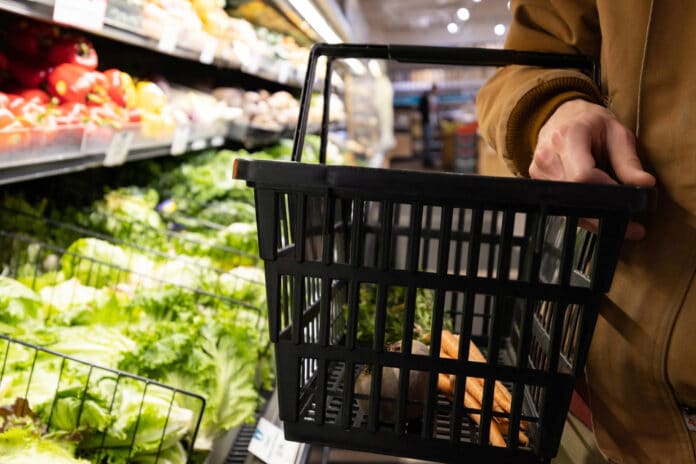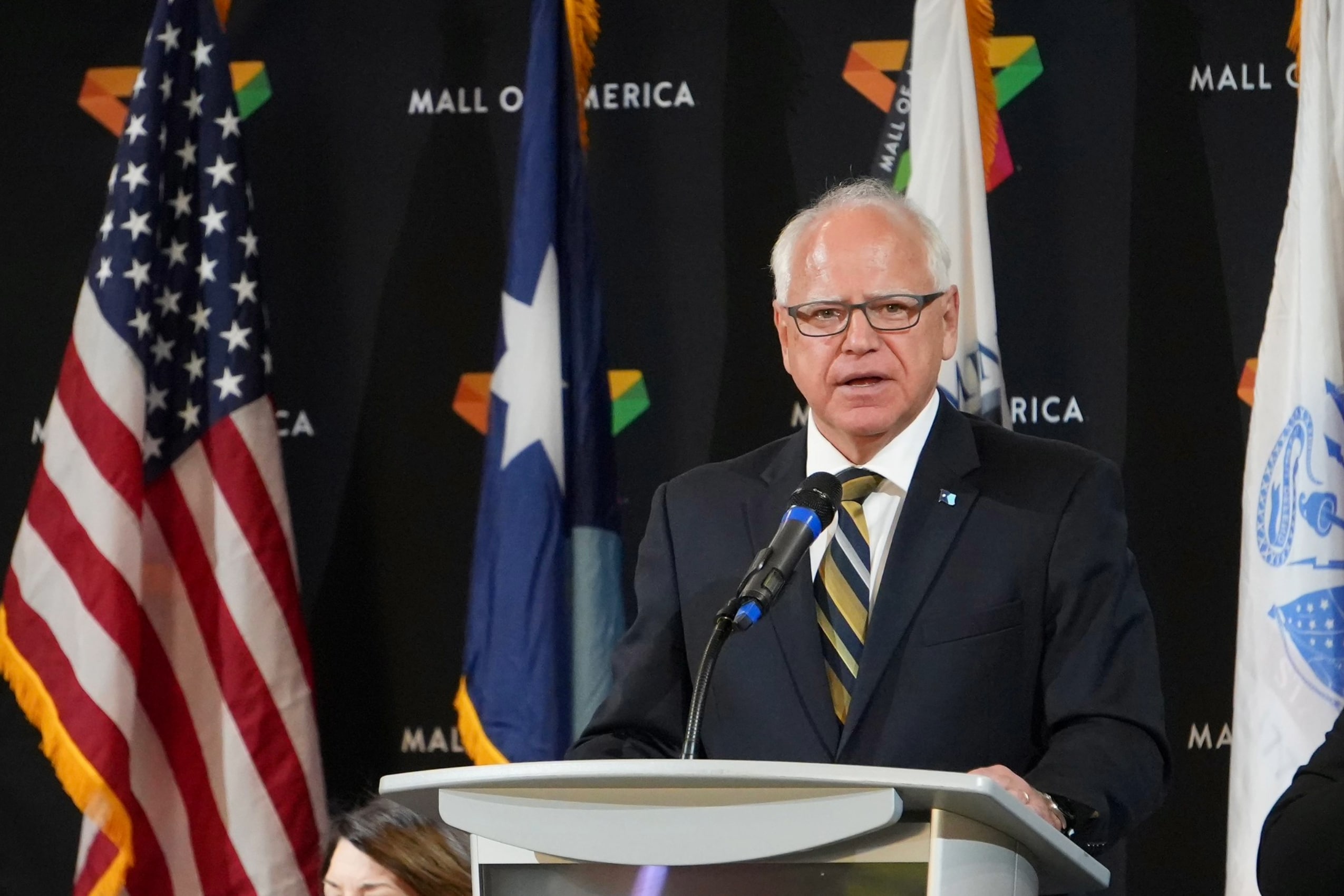
As she walked down the driveway to her mailbox on a late August afternoon, Jen Miron’s mind was on last-minute back-to-school purchases. Her youngest two children were due back in their classrooms the following week.
When she retrieved her mail, Miron—a preschool teacher who has lived with her husband in the Rosemount-Apple Valley-Eagan School District for more than two decades—was surprised what she saw inside two letters marked with a return address to a PO Box for a third-party vendor in Sioux Falls.
Inside each postmarked envelope was what looked and felt like a credit card. Her children’s names were printed on the front of each card, along with the emblazoned words, “Summer EBT” and “Minnesota EBT.”
The accompanying letter said in bold capitalized type at the top, “HERE IS YOUR SUMMER EBT CARD.” It also included a note, “DO NOT THROW THIS CARD AWAY! It is the only way to get your benefits!”
“My first thought was, ‘Is this a scam?’” Miron said. A few days later Miron received text messages from a number claiming to represent the Minnesota Department of Children, Youth and Families.
“Begin using your Summer EBT benefits right away! They expire in 3 months.”
The text messages contained an accompanying link that navigated to the state agency’s landing page for the “Summer EBT Card” program. In late May, Gov. Tim Walz had touted the launch of the new program as a way “to help families purchase food during the summer months.”
The Mirons are a dual-income family. They live in an Apple Valley subdivision whose home values average about $700,000.
She reached out to her neighbors who belong to a local Facebook group and learned hers wasn’t the only family in the subdivision whose children received a “Summer EBT” card. They were among 457,000 Minnesota students who received the cards during the month of August, totaling $55 million. That means more than half of the state’s nearly 870,000 public school students received a card, according to Department of Education enrollment data.
Miron called the state agency in charge of distributing the cards.
“I want to make sure that the people who really do need help with groceries for their children during the summer months get this money,” she said. “My family doesn’t need it.”
That’s exactly what Miron told the “Summer EBT” staff member she spoke to over the phone last month, trying to figure out why her family received the cards and whether she could donate them to a local food shelf. During her phone conversation, she received confirmation the “Summer EBT” card was not related to the state’s new universal school meals program that debuted in 2023.
The staffer confirmed the cards were indeed real and intended for her family, and told her there were two ways a student would qualify to receive a “Summer EBT” card:
- The student is getting free and reduced lunch at school;
- Someone in the family is getting MFIP, SNAP or if any child in the family is receiving Medicaid assistance and are between the ages of 7 to 17.
Miron said no one in her family qualifies for any of those programs.
“As long as the child was added into the school database as getting free and reduced lunch, that’s how the kid was getting the ‘Summer EBT’ program (card),” the staffer told Miron.
Nearly one in three students received cards in suburban district
Officials with Independent School District 196—which spans Apple Valley, Rosemount and a portion of Eagan—confirmed that about 31 percent of its 10,000 enrolled students should have received a “Summer EBT” card in the mail sometime during the month of August. A spokeswoman for the district said that “if a family did not complete the application with the district your questions about qualification should be directed to the state, not the school districts.”
Miron contends that neither she nor her husband have ever filled out information with the state or her school district listing their household income or requesting need-based aid. The same goes for one of their neighbors, a local business owner in the district who asked to remain anonymous, but said she doesn’t believe her family should have received those cards either.
“I would consider our neighborhood upper middle class,” the parent said. “It makes me wonder how many people across the state are receiving this money that don’t need it, and how many people who really could use it are not getting it.”
Miron noted that she and her neighbors received the debit cards less than a week before the new school year started, seemingly defeating the intended purpose of the “Summer EBT” program.
“I have to imagine for those who truly could use this money, they would have needed it during the summer months,” Miron said.
Officials with the Minnesota Department of Children, Youth and Families said that although the program debuted in May, its contracted vendor only began printing the cards on July 22.
“(Summer EBT) Cards were mailed in batches, and the vendor committed to mailing all cards by August 12. It takes 2-3 weeks for cards to arrive in homes,” Spenser Bickett, a media relations specialist for the program, told Alpha News.
Program is funded by USDA, managed by state
The federal government is footing the bill for the program through the U.S Department of Agriculture.
Funding for the “Summer EBT” is expected to exceed $3 billion. The appropriation was included as a provision in the $1.7 trillion Consolidated Appropriations Spending Act of 2023 that President Joe Biden signed into law in late 2022. The program was created as pandemic-era summer EBT benefits for school-aged children expired.
In May, Minnesota announced it was one of 35 states that proactively opted into the new federal “Summer EBT” program, and as a result the state’s departments of education and human services estimated about 400,000 students would be eligible to receive $120 “preloaded” debit cards for their families to purchase food during the summer months.
As the school year neared its end in May, Gov. Walz and Department of Human Services deputy commissioner Tikki Brown said the program benchmark is “making sure an estimated 400,000 kids stay full all summer and ready to learn come fall.”

“Summer can be difficult for families who rely on school meals to help feed their children,” said Brown in a statement praising the new program. “Providing additional food support during this time can help alleviate that stress for families and ensure children can stay healthy and focused, setting them up for success all year round.”
Governors in neighboring states such as Iowa and South Dakota chose not to opt into the program.
Govs. Kristi Noem and Kim Reynolds have received criticism for opting not to enroll in the program. Reynolds said in December that Iowa has its own assistance programs to ensure school children from low-income households have access to meal assistance during the summer.
“Federal COVID-era cash benefits programs are not sustainable and don’t provide long term solutions for issues impacting children and families,” Reynolds said. “An EBT card does nothing to promote nutrition at a time when childhood obesity has become an epidemic.”
Other Midwest states that have enrolled in the “Summer EBT” program include North Dakota, Wisconsin and Illinois.
Minnesota’s participation in the “Summer EBT” program comes during the continued fallout from the Feeding Our Future fraud.
In June, the Office of the Legislative Auditor released a report that criticized the Minnesota Department of Education (MDE) for failing to take necessary oversight measures, enabling the multi-million dollar Feeding Our Future fraud scheme to persist in 2020 and 2021.
Miron says she supports the notion that the government can help bridge the gap for families struggling to feed their children. But she’s now wary of whether the program has proper oversight.
“I would want somebody to look more closely at who is receiving these cards, and when they received them,” she said. “It just doesn’t seem to be working the way they intended it to.”
Hank Long
Hank Long is a journalism and communications professional whose writing career includes coverage of the Minnesota legislature, city and county governments and the commercial real estate industry. Hank received his undergraduate degree at the University of Minnesota, where he studied journalism, and his law degree at the University of St. Thomas. The Minnesota native lives in the Twin Cities with his wife and four children. His dream is to be around when the Vikings win the Super Bowl.

















